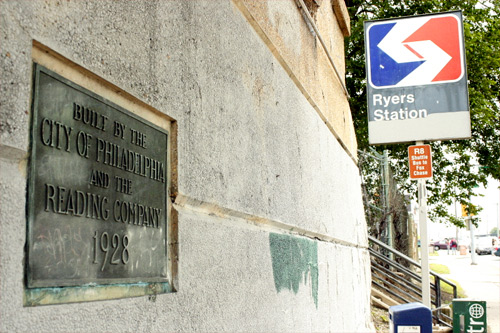|
|
|
10 June 09: INDEPENDENCE PASS
by Chris Dougherty

Safety, Service, Continuous Improvement
Emblazoned on the cards of SEPTA managers is the terse mission statement: Speed, Service, Continuous Improvement -- the last of these three goals bespeaking the
perpetually unfinished nature of SEPTA's people moving business. "Continuous improvement" is the bulkier way explaining the state of becoming that the system always
seems to be in -- a system always "getting there" or a system "serious about change." But as refurbished stations, brand new Silverliner Vs, a long awaited farecard
system and a SEPTA presence on Google Transit slowly rumble into view, it can be said with confidence that some kind of new attitude is permeating the halls of
1234.
To inspect the system with the freedom of an Independence Pass is to experience a great organism that through great effort has become greater than the sum of its
seemingly disjointed parts. While most wouldn't care to know it, to ride the system in an afternoon is to experience a bewildering array of predecessor systems
knitted deftly together under great duress. I rode on a City-owned Broad Street Subway car into stations from the 1930s, I rode on buses that have navigated the same
routes since they were trolley cars operated by the Philadelphia Transportation Company, I rode on trolleys people still call "the Red Arrow", I rode on multiple unit
regional rail cars purchased in the 1960s by SEPTA's ancestor agencies, and my rides terminated at great stations (now Transportation Centers in SEPTA parlance) that
through massive capital infusions stitch car and bike and bus and rail to the periphery of the city and region.
And as Steve Ives said yesterday, there's more to the popular misconception that SEPTA is the transportation choice of last resort. The SEPTA that I saw was, and is
continuing to become, the SEPTA envisioned by the pioneering 1970s chairman James McConnon, "a total transit complex" for all people -- from Yale to jail. I can
personally say that some SEPTA managers see transportation as a right and the speedy and safe movement of people on buses, cars, trolleys as a question of social
equity. While it has become sport to malign the system, the intransigence of its managers, the feistiness of its unions and the sometimes deplorable condition of its
stations -- all of these flaws emanate from the Frankenstein nature of the system's creation and a lack of dedicated funding. Recently, though, SEPTA's management
seem to have taken their collective heads out of the foxholes to look farther into the future to plan a system not just for moving people to existing sites but to new
places where people want to go. Managers have taken an inheritance and begun to make it their own.
SEPTA's new responsiveness to the public bodes well -- it should give us all a sense of ownership that this thing is ours to mold and fashion. It should give us an
enthusiasm to participate in the great task of moving a city. What follows is a record of one day's participation.
CLICK HERE TO LAUNCH PHOTOS.
There are 40 photos, 16M in total size, so please just give the page a moment to load.
–Christopher R. Dougherty
christopher.r.dougherty@gmail.com
For more of Chris' work, please visit his web site, The Necessity For Ruins.
|
   
|
|



